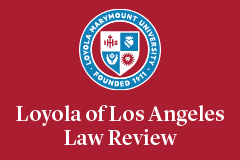Article Title
Supreme Court—October Term 2009 Foreword: Conservative Judicial Activism
Abstract
Over twenty years ago, my Foreword on the Supreme Court’s October 1988 Term titled The Vanishing Constitution discussed how the conservative majority on the Court emphasized deference to majoritarianism. Momentous decisions that term included ones that upheld the death penalty for juveniles and the mentally retarded, allowed random drug testing for government employees, permitted greater government regulation of abortion, and significantly narrowed the availability of habeas corpus in federal courts. Over the last two decades, the Supreme Court has become significantly more conservative, but the conservatism of October Term 2009 differs from that of October Term 1988. The latter emphasized great deference to the decisions of the elected branches of government, but the current conservatism shows little such deference, especially when deference conflicts with the conservative judicial ideology.
Today’s Court—the Roberts Court—is a conservative, activist Court. I think that the three most important decisions from October Term 2009 were Citizens United v. Federal Election Commission, which found a First Amendment right of corporations to spend unlimited amounts of money in elections; McDonald v. City of Chicago, which held that the Second Amendment applies to state and local governments; and Berghuis v. Thompkins, which is the most significant limit on Miranda rights since that case came down in 1966. In this Foreword, I examine these three cases to establish my central point: we are at a time of significant conservative judicial activism; the Court has replaced the deference of twenty years ago with a very different brand of judicial conservatism.


